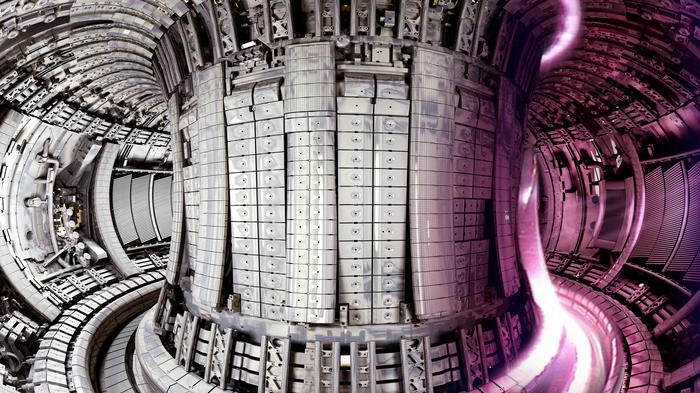
Since 1983, scientists have used England's Joint European Torus (JET) to recreate nuclear fusion, the merging of atoms that powers the sun and other stars, in Britain. An effective nuclear fusion setup could give us immense quantities of clean energy.
Now, during the last days of its four-decade-long life, JET has set a new record for the most energy created in a single fusion reaction. JET's new record is the latest milestone in an exciting few years for fusion. With each milestone, fusion scientists inch closer — slowly, very slowly, but steadily — toward constructing a commercial fusion power plant that can plug into the grid.
Using 0.2 milligrams of fuel (about a hundred thousandth of an ounce) JET sustained high fusion power for 5 seconds and created 69 megajoules of energy. That's about enough to power an average home for maybe a few minutes. Neither of these parameters seems Earth-shattering, but they are indeed numbers for fusion scientists to celebrate.
"JET's final fusion experiment is a fitting swansong after all the groundbreaking work that has gone into the project since 1983," UK Minister for Nuclear and Networks, Andrew Bowie, said in a statement. "We are closer to fusion energy than ever before thanks to the international team of scientists and engineers in Oxfordshire."
Related: How the Large Hadron Collider's successor will hunt for the dark universe
However, while JET did set a record for raw energy, it did not set a record for yield. That's the ratio of energy produced to the energy that scientists put in to trigger fusion in the first place. JET once held that record, too, but the National Ignition Facility (NIF) in California’s Lawrence Livermore National Laboratory surpassed it in 2022.
In fact, NIF was the first fusion facility in the world to do something that JET could not do: elicit a yield of more than 1, or, in other words, create more energy than scientists put in. As of late 2023, NIF has achieved yields of close to 2.
Tempting as it is to compare the two experiments, doing so directly is difficult. NIF is an example of inertial confinement fusion (ICF). NIF's apparatus relies on blasting a fuel-stuffed capsule with lasers, creating intense X-ray cascades that compress the fuel into fusion. JET, on the other hand, is a tokamak, or a doughnut-shaped container stuffed with superheated plasma. By magnetically sculpting the plasma, a tokamak's operators can ignite fusion.
For JET, this record means that the facility can end its life on a triumphant note. Its operators have already begun the lengthy process of decommissioning the reactor. But JET's end is certainly not the end for tokamak science. JET is a testbed for the International Thermonuclear Experimental Reactor (ITER): a future reactor set to launch in 2025, with an eye of testing tokamak tech for a line of future reactors even farther in the future.







